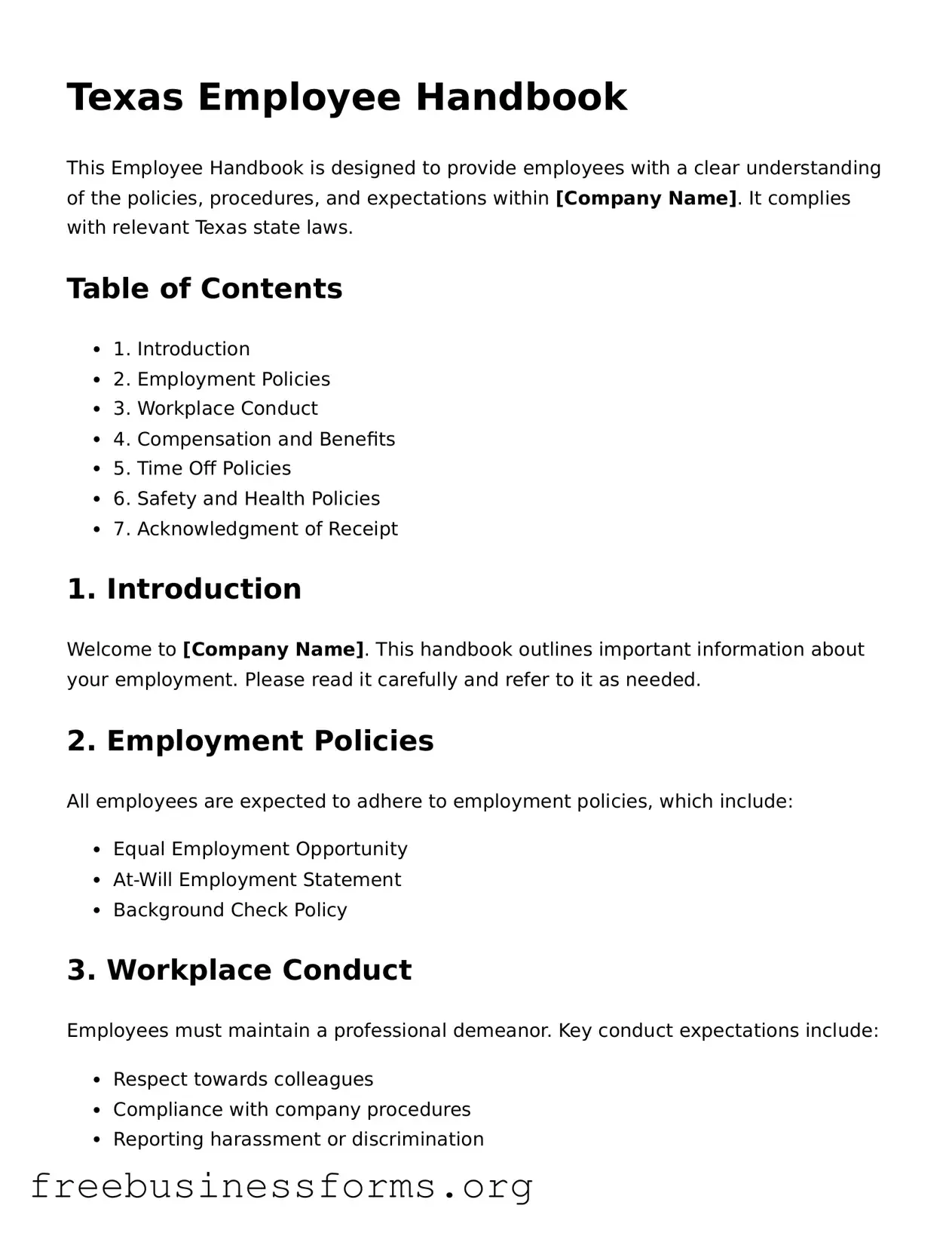Texas Employee Handbook
This Employee Handbook is designed to provide employees with a clear understanding of the policies, procedures, and expectations within [Company Name]. It complies with relevant Texas state laws.
Table of Contents
- 1. Introduction
- 2. Employment Policies
- 3. Workplace Conduct
- 4. Compensation and Benefits
- 5. Time Off Policies
- 6. Safety and Health Policies
- 7. Acknowledgment of Receipt
1. Introduction
Welcome to [Company Name]. This handbook outlines important information about your employment. Please read it carefully and refer to it as needed.
2. Employment Policies
All employees are expected to adhere to employment policies, which include:
- Equal Employment Opportunity
- At-Will Employment Statement
- Background Check Policy
3. Workplace Conduct
Employees must maintain a professional demeanor. Key conduct expectations include:
- Respect towards colleagues
- Compliance with company procedures
- Reporting harassment or discrimination
4. Compensation and Benefits
Employees will receive compensation based on their roles. Benefits include:
- Health insurance options
- Retirement savings plans
- Paid time off
5. Time Off Policies
Understand the various types of leave:
- Sick leave
- Vacation time
- Family Leave Policies
6. Safety and Health Policies
The safety of our employees is a top priority. Policies include:
- Emergency procedures
- Workplace safety standards
7. Acknowledgment of Receipt
Please sign and return this acknowledgment page, confirming that you have received and read the Employee Handbook.
Employee Name: ________________________
Date: ________________________
